Around two years ago, one of the most polarizing card types was introduced to the game. While similar in some ways to the previous fan favorite quests, questlines appeared to be a slower version. While giving rewards at certain intervals, they would ultimately only be worthwhile if you could jump through hoops 3 times and grab the final prize. Back before the community got to playtest these cards, I made a series of articles going in depth on each of them - when you could expect to complete them and ultimately whether this would be good enough to see play or not. Now that these cards have had their time in standard and left their mark on the game’s history, it is time to look back at their legacy, both to see how accurate the predictions were and also to determine if questlines should return again in the future.
Final Showdown
When first revealed, Final Showdown seemed a bit awkward. The questline requires you to draw 14 cards in batches of 4, 5, and 5 with the reward of making your future draws better. Given the fact that the game starts with 3-4 cards in hand, you draw an extra one on the first turn, and that every turn where you were not able to meet a requirement just made the reward worse, made the card seem borderline unplayable, even with the support the card got with Lion's Frenzy and Irebound Brute.
However, unlike many of the questlines I will talk about in the future, the rewards for each step of the questline were much stronger and chained into each other, allowing for progression through the later steps to become much easier. Of all the math I had done for the other 9 questlines, this one led me to a breaking point. This was due to the amount of moving parts of Soul Fragments, the discount leading to the next steps being easier, having outcast trigger, so on and so forth. All this led to the culmination of me printing out my playtesting list and spending an evening just playing Hearthstone by myself, which despite sounding a bit sad was actually really fun.
When United in Stormwind finally came out, the deck played significantly better than what many players had expected. Demon Hunter was able to cycle through their entire deck around turns 7-8 with help from the questline, building up into one of two different ways to close the game. The first one entailed flooding the board with a swarm of Irebound Brutes doubled from Felosophy, as well as beating down the opponent with a big Lion’s Frenzy swing, while the second and much more popular version of the list ended the game with the Il’gynoth combo. This combo relied on the namesake card and some combination of Mo'arg Artificers, Felscream Blasts, and Talented Arcanists to deal 32 or more damage to the opponent.
While needing a lot of cards to combo off, Final Showdown and another major card I overlooked in Acrobatics helped tremendously in allowing this deck to not only draw all the required pieces to win, but also discount them to be able to play them on turns 7-8. The speed, difficulty to interact with, and most importantly the fact that the deck was filled to the brim with lifesteal and board clears resulted in Il’gynoth being nerfed, going from 4 to 6 mana. This would slow the deck down by a turn or two, which put it in line. It should also be noted that the Irebound Brute was also nerfed about a month after the Il’gynoth nerf, severely hurting that version of the deck as well.
However, before rotating out, Final Showdown came back with a new set of friends and vengeance on its mind. Now supporting the creatureless package with Souleater's Scythe, Final Showdown helped enable a combo featuring Lady S'theno, where she has her attack buffed, followed by a bunch of discounted spells causing her to attack the opponent a bunch. Ultimately, this deck was proven to be too consistent and Final Showdown was nerfed, with the first step now requiring 6 cards drawn. While the deck still existed after the nerfs, Final Showdown was not included as the first step was now too steep. Predation, Sinful Brand and Lady S’theno would all be nerfed later on as well, showing that the core of the deck was still incredibly powerful.
After it was unnerfed, Final Showdown also had success in wild, both with returning friends Il'gynoth but more recently also with Tony, King of Piracy. Granted, with the recently announced nerfs, its looking like the class will have to go back to Il'gynoth again but that should not cause much of an issue.
I think it is pretty fair to say that Final Showdown is probably the biggest underdog of the Questlines, both appearing to be very difficult to complete and also having an underwhelming final reward. Though much like another quest that everybody made fun of at launch for the same reasons that I was cautiously optimistic on (this being The Caverns Below), Final Showdown proved to be somewhat meta-defining, and certainly an example of how difficult evaluating questlines would be.
Lost in the Park
The general consensus on Lost in the Park is probably my favorite of all the questlines. While there were plenty that thought it would be either real strong or pathetically weak, the most common opinion about it was just that it was incredibly boring. Since a good chunk of cards that give attack also give armor, the questline step rewards felt fairly boring, and the reward at the end is ultimately is just a cheaper Alexstrasza the Life-Binder which, while still a popular card to run at the time, did not feel like a reward worth jumping through a lot of hoops. I was more or less in the same boat, saying that the step rewards were underwhelming and that while Guff the Tough was a great payoff, the deck ultimately would lack enough support to truly let it be strong.
Once finally playable, there are two stories to tell about Lost in the Park, one for Standard and the other for Wild. The card more or less had a middling performance in standard, seeing some play in preexisting shells such as Token Druid, using cards like Mark of the Spikeshell to double or even triple up on the quest reward to help with the last bit of required damage. This would be a common trend for the card, later on being used as one of the win conditions in Anub'Rekhan combo decks, but the card alone never was strong enough to be the defining card of the deck, at least for standard.
Wild on the other hand was a completely different story. Without going into too much detail, the entire format was centralized on The Demon Seed. I will go into more detail on why that card was probably the strongest card ever printed later on in the series, but to put it simply, you had to win before the deck was able to get its wheels spinning. This would prove to be very difficult due to the amount of healing the deck had, which often forced you to pad your health long enough to survive the first couple of turns where Blightborn Tamsin was online and find some other way to close the game before their fatigue would kill you - a strategy that was just not worth it.
However, Lost in the Park was in the incredibly specific spot where it simultaneously applied tons of pressure to the opponent by attacking for large amounts of damage, did not provide bodies to heal off of, and also padded your own life total to help close out the last bits of damage after Tamsin came down. To put it simply, the meta consisted more or less of two decks. The Demon Seed Warlock that preyed on every single deck in the game and Lost in the Park Druid that preyed almost solely off of Warlocks. Despite the dominance that Warlocks had over the entire format, the first season that United in Stormwind was legal in had both number 1 and 2 legend taken up by Druids, both being the exact same list as well. Once the warlock quest was banned, Lost in the Park lost a fair bit of its power in the format as other decks were able to return, though it still is playable with the help of cards such as Secure the Deck, Rake, and Spread the Word, all proving to be fairly powerful options.
When going back and reading about the initial reception of the questlines, Lost in the Park definitely got a bad rep it did not deserve. Not every card needs to be incredibly flashy to be meta-defining, and the Druid questline is a great example. While I obviously would have never predicted this would be one of the only cards that would have a positive matchup against arguably the strongest deck ever, I feel like it did a good job more or less when predicting its time in standard.
Defend the Dwarven District
In complete contrast to the Druid questline, Defend the Dwarven District was heralded as the second coming of Razakus Priest and for good reasons too. The Hunter questline essentially turned you into Shadowreaper Anduin with an active Raza the Chained. Due to the dominance that deck has had over both standard and wild at different times, to say there were some pretty high hopes for this card would be an understatement. However, when reading about the initial reception for this card, something interesting stood out to me. Many people, myself included, immediately dismissed the card in more aggressive decks and instead focused on its control applications, with this card finally bringing the elusive control hunter deck to the forefront of the meta after being teased so many times in the past.
Once the set came out, this dream of finally having a control hunter deck was almost immediately shattered. While the card was strong, putting out results in both standard and wild, it showed up in both aggressive and slower decks. However, as the standard meta continued to develop, a lot of the slower variants began to fizzle away, resulting in not a whole lot of defending the dwarven district and a lot more pointing spells at the opponents face and refueling with Voracious Reader or eventually Ferocious Howl. It was actually this version with Ferocious Howl and Drek'Thar that would eventually lead to the questline being nerfed, now requiring 3 spells for the first step. That nerf caused the card to fade out of the metagame for the most part, appearing somewhat once Murder at Castle Nathria came along and brought along the Arcane Hunter package, though it was nowhere close to the strength it once had.
As for wild, Defend the Dwarven District was immediately put in a deck with Baku the Mooneater to create a burn deck. While having every spell deal an extra 3 damage was already strong, what pushed this deck over the top was Rapid Fire, which would complete a quest step all by itself. Combined with other aggressive one-drops like Toxic Reinforcements resulted in the deck being one of the stronger decks in the meta. However, it would not establish itself as a meta-defining deck until the Demon Seed was banned. Once this did happen though, odd questline hunter became one of the fastest decks of the format. This was the case up until its strongest card, Rapid Fire, was nerfed from 1 mana to 2 mana, making it unplayable in the deck and killing off that variant. However, Rapid Fire was such a strong card in conjunction with the quest that it still exists in some form or another in wild without the handicap of only having odd cards in it. Defend the Dwarven District has popped up every now and then with cards like Dragonbane and the arcane package both helping the card keep up with the modern climate of the format, even after the nerf to the questline itself.
While the community was more or less right about the card being very strong, it was not quite for the reasons people were expecting, myself included. Ultimately I think this is to be expected with how slow everybody thought questlines would be. While my estimates of being able to cast Tavish on turn 7 were mostly on track (for standard at least), I was too focused on the fact your hand would be more or less empty at that point. However, looking at both the lists that got results and even my own theorycrafted list, it becomes apparent that this is not always going to be the case, with cards like Quick Shot most likely replacing itself, Tracking often being 2 spells, and Barak Kodobane providing a fair amount of reload. While obviously not possible to predict, later additions like Dragonbane Shot and the aforementioned Ferocious Howl would both further make this less of an issue.
Wrapping Up
And with that the retrospective of the first 3 questlines is done! In case it is not obvious by the fact this is my second go through talking about these cards in depth, they are probably some of my favorite cards I have ever played with. Final Showdown probably accounts for around ~200 of my ranked wins with the class so I might be a little biased with it. Up next we'll take a look at Sorcerer's Gambit, Rise to the Occasion, Seek Guidance, and Find the Imposter so make sure to tune in then! Have any strong opinions on any of the questlines covered in this article? Feel free to share them in the comments below!


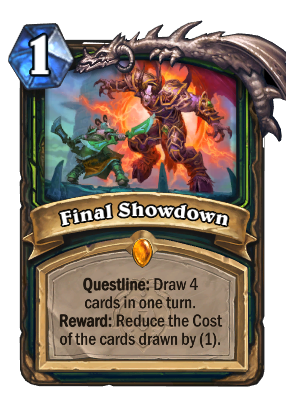
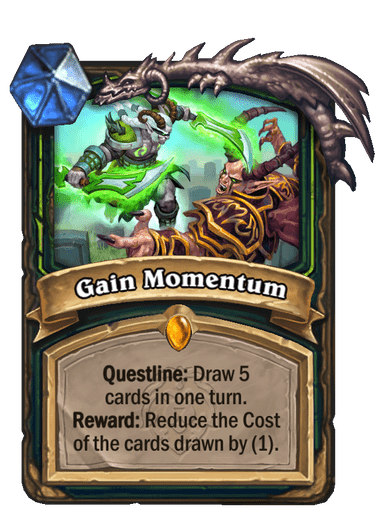
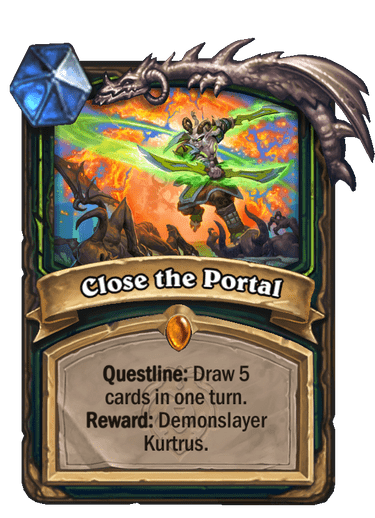
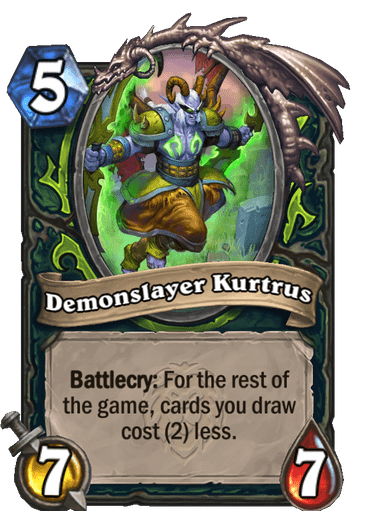
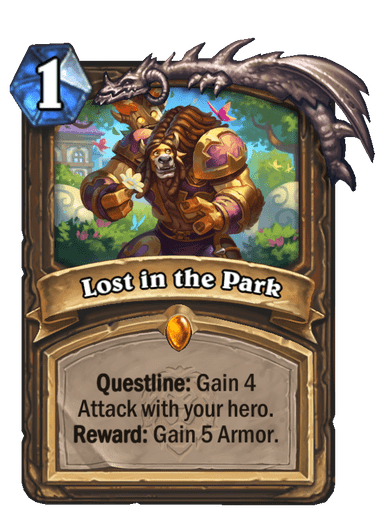
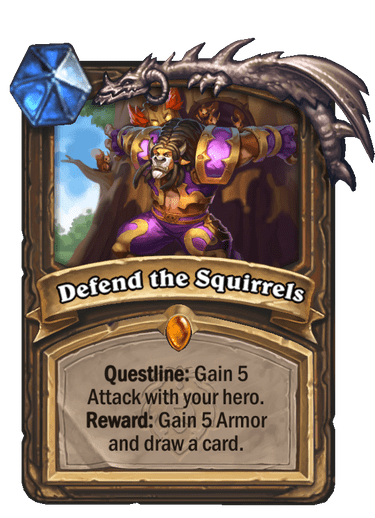
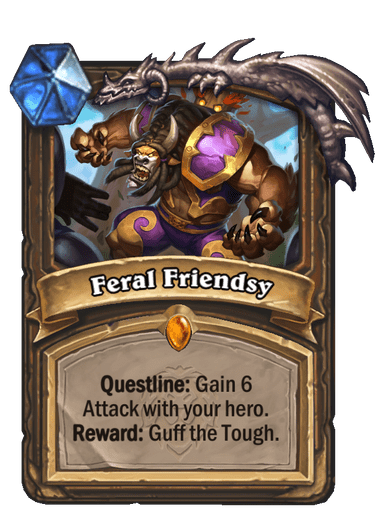
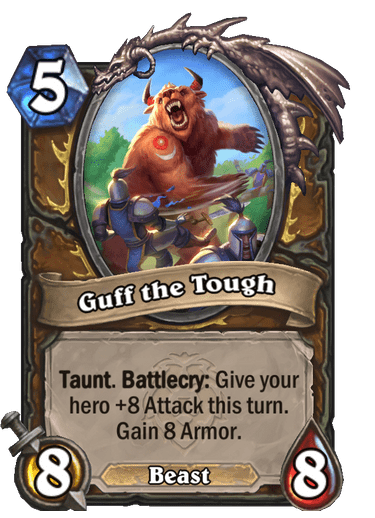
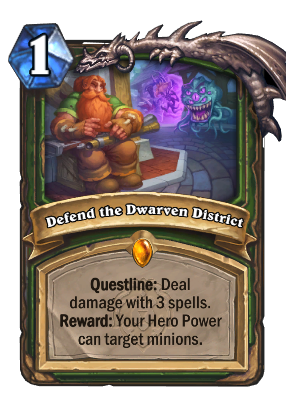
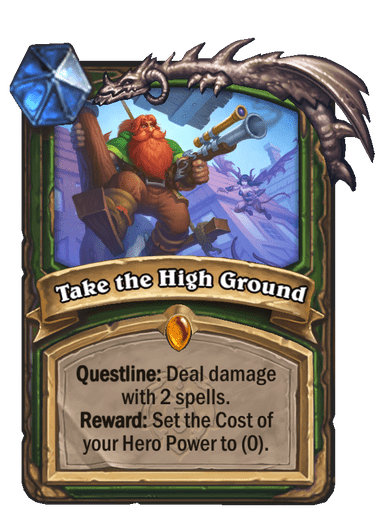
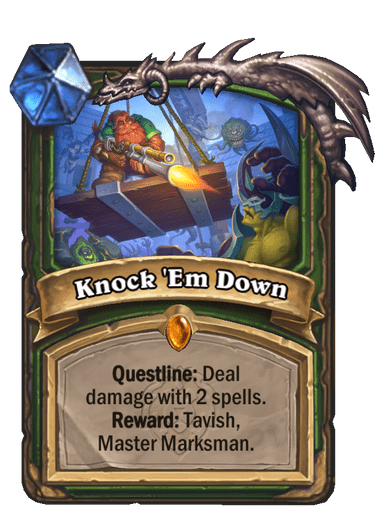
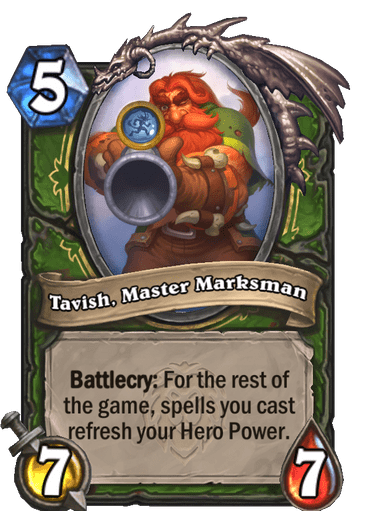





Comments
Questlines as a concept are great, but Final Showdown was interactive compared to the mage questline. The mirror matches for those were excruciating as both players strained to avoid playing minions the opponent could target; the key play was often to drop a minion and immediately blow it up yourself. It was even worse than non-interactive: it was anti-interactive.
On a personal note, I get plenty of predictions wrong about future card power levels, but I'll take credit for calling Barak Kodobane. Card draw in classes that usually don't have it is nearly always great!
This may just be me but I've always loved matchups that flip the traditional game on its head. I never played much Final Showdown once it started to catch on, but the song and dance of learning the ins and outs of a specific matchup and how precisely to navigate it is always so satisfying to me. Granted, given how the OTK Final Showdown list operated, I can definitely see it getting old eventually as its just two people playing solitaire, but atleast for those initial weeks of people playing the deck it seemed like it was a ton of fun.
Also its always so much more satisfying getting good predictions before a set comes out, they definitely outweigh the negatives. While in the back of my head I'll always remember that I called Maiev Shadowsong one of the strongest cards in the game, I'll atleast be able to drown it out knowing that I predicted Rebuke to be awful. Its honestly a big reason why I try to have strong opinions on every card since while sometimes it leads to me being very wrong, atleast its fun to laugh at.
Despite my love for Quest decks, it occurs to me now that I barely touched the Questlines by comparison. They didn't seem to be directed toward the playstyles I prefer, or those that interested me just weren't good enough to justify playing them.
I think questlines were an improvement compared to the original Un'Goro quests: by getting intermediate rewards, the end reward didn't have to be ridiculously strong to make the quest(line) worth playing. The DH questline was an extreme example of this, where the end reward didn't even get played in most games: it was the intermediate discounts that mattered.
In some cases though, like the Warlock and Warrior questlines, the end reward did have game-ending power and I think those would have been better if toned down a little. Ironically, while Priest's end reward was literally game-ending, it didn't feel as much of a problem, since surviving until the point you could use the reward was hard enough.
Like quests, questlines lead to decks that tend to play very similarly from game to game, so while initially they're fun, they can out-live their welcome. This could maybe have been mitigated if there had been balance changes sooner: by the time the Hunter and Warrior questlines got nerfed, I was already really sick of queuing into them.
A lot of the questlines don't have much of a board presence, which makes the game play quite uninteractive: while I enjoyed playing the DH questline myself, it's not very fun to sit there and watch an opponent draw and play a huge number of cards per turn. This is a problem with the specific questlines introduced in Stormwind rather than questlines as a mechanic, so I hope that if questlines come back, they will be more minion-centric.